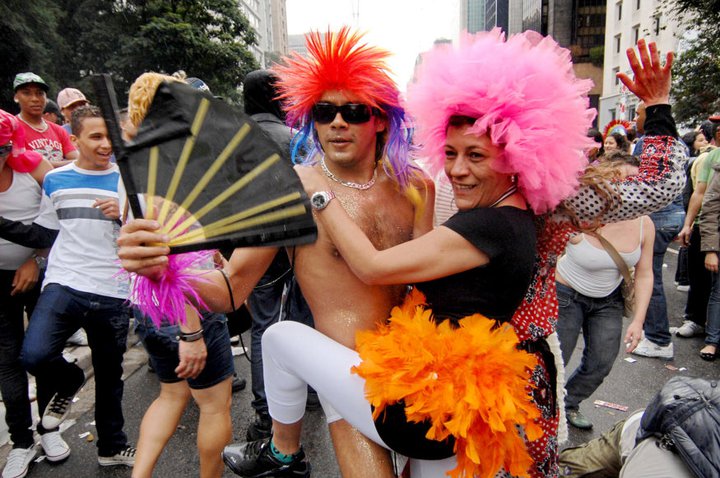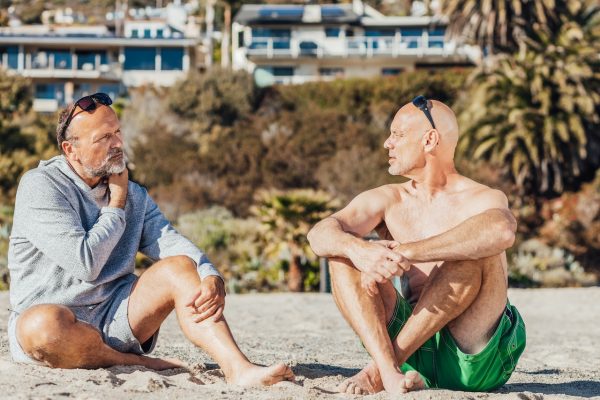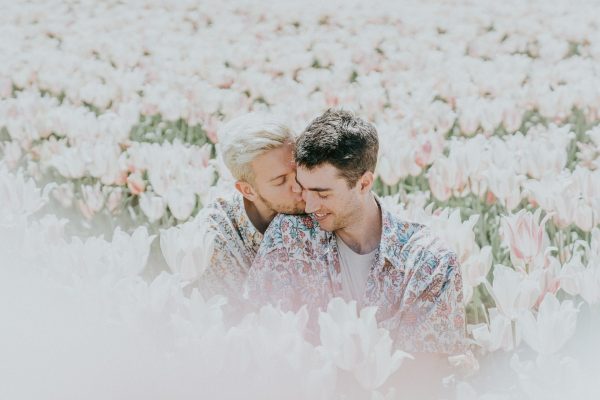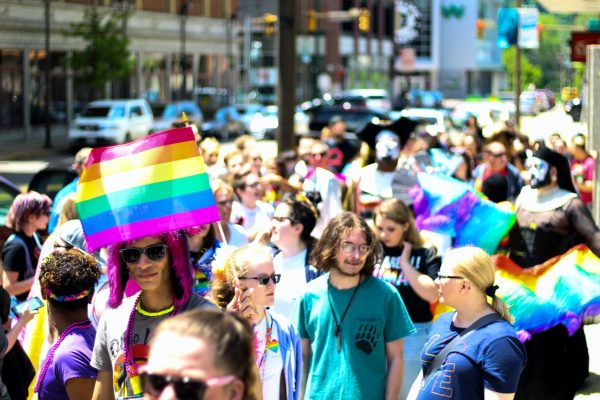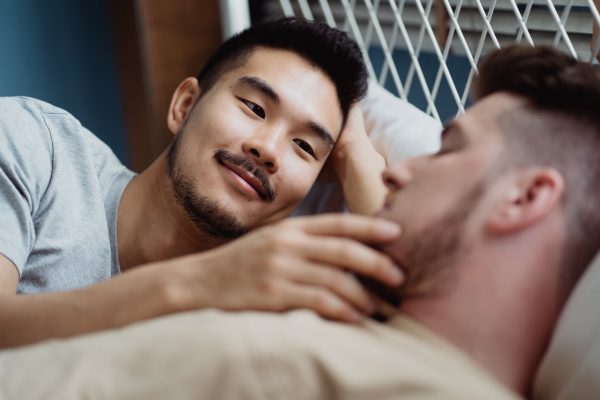Brazil: It was a long way from State repression, under the military regime, and the civil liberties that have been conquered after the country’s democratization.
A repressive background
The military coup and its regime took place in 1964, resulting in what has been acknowledged as ‘the years of lead.’ It took Brazil 15 years to actually witness a political opening.
In 1979, when activists and politicians were allowed to found new parties, the country began a timid walk towards democratization. Nonetheless, the first president elected democratically was José Sarney, whose office only began on March 15, 1985. Since then, all Brazilian presidents have been democratically elected, though two of them were removed by an impeachment process conducted by the National Congress (Fernando Collor and Dilma Rousseff), being replaced by their vice-presidents – Itamar Franco and Michel Temer, respectively.
As for Dilma Rousseff, elected in 2014 for her second mandate, the impeachment process is not over yet. She still awaits the final decision by the Senate as to whether she is really going to be impeached for good or if she will return to office. Meanwhile, her vice-president Michel Temer, considered by many as a scammer who stabbed her in the back, is in charge of the country.

Anyway, the point of this article is rather different from presidential issues. It is all about one question: How did Brazilian LGBT people manage to move from the silence of the indefensible to the celebration of sexual and gender diversity in the open?
That’s what I try to show in brief as you will find below:
A Brief History of the Brazilian LGBT Movement
(between 1978 and 1991)
 June 28th, 1969 has been considered the landmark as to the beginning of the world gay movement. The turmoil surrounding the Stonewall Inn with its subsequent riots have played a central role in getting lesbians, gays, bisexuals, and transexuals out of the shadows to the center of the political and social agenda.
June 28th, 1969 has been considered the landmark as to the beginning of the world gay movement. The turmoil surrounding the Stonewall Inn with its subsequent riots have played a central role in getting lesbians, gays, bisexuals, and transexuals out of the shadows to the center of the political and social agenda.In Brazil, a lot was done just after that. For instance, in 1978 O Lampião (The Lamp) newspaper was founded. It became the primary communication vehicle for the homosexual community.
In March 1979, the first organized homosexual group appeared in São Paulo (the biggest city of Brazil). The group was named “Somos” (We Are). After that, new groups emerged in Rio; “O Grupo Gay da Bahia” (The Gay Group of Bahia) in Salvador; “Dialogay” in Sergipe; “Atobá” (Booby) and “Triângulo Rosa” (The Pink Triangle) in Rio de Janeiro; “Grupo Feminista-Lésbico” (The Feminist-Lesbian Group) of São Paulo; “Dignidade” (Dignity) in Curitiba; Grupo Gay do Amazonas (Gay Group of Amazon); “Grupo Lésbico da Bahia” (Lesbian Group of Bahia), and so on.
In 1980, São Paulo hosted the first Brazilian Encounter of Homosexuals. Four years later, in 1984, the second EBHO (Brazilian Encounter of Homosexuals) was held in the city of Salvador. Eleven years later (1995), the city of Curitiba welcomed the VIII Encounter of Brazilian Gays, Lesbians, and Transvestites. The term Transgender hadn’t caught on in Brazil yet. Fairly enough, even today, some transgender women would rather identify as transvestites than transgender or transexual.
In that year (1995), the Brazilian Homosexual Movement counted approximately 50 groups, spread all over the national territory, including four lesbian groups, four transvestite groups, and the recently founded Brazilian Group of Transexuals (in the city of Cuiabá), the first of that kind in South America. Transexuals were finally popping up in the LGBT scene.
Why did homosexuals form organized groups and still do?
A homosexual (nowadays, LGBT) works as a sort of union to defend the category, uniting forces to fight discrimination and put pressure on public representatives in order to guarantee LGBT rights and full citizenship.
Basically, the Brazilian Homosexual Movement used to have three objectives: fighting all expressions of homophobia (intolerance against homosexuals); divulging accurate, positive information on homosexuality; raising awareness of gay, lesbian, and transgender people as to the importance of getting organized and fight for full rights.
Currently, what used to be called “Homosexual Movement” has been renamed “LGBT Movement” as it represents more segments in terms of sexual and gender diversity. However, this acronym has proven insufficient. Many people would rather say LGBTQIA+ as it sounds more comprehensive, including queer, intersexual, and asexual too. The plus sign means there must be others that may not have been represented with the addition of those three letters, though.
Homosexual groups work through meetings in which their members and visitors informally discuss their communities daily problems, plan on actions to divulge their objectives, and function as support groups to build self-esteem. They also broadcast information on strategies to prevent HIV-AIDS and other sexually transmitted illnesses.
The Brazilian Homosexual Movement — as it used to be named — is just over two decades old, but it has achieved important victories. One of those victories took place in 1985 when the Federal Council of Medicine declared that homosexualism (sic) would no longer be regarded as a “sexual deviation or disorder.”
Another victory took place in 1989 when a ban on discrimination for sexual orientation was included in the Journalists’ Code of Ethics.
Furthermore, in 1990, 73 municipalities included a ban that expressly forbade discrimination for sexual orientation in their organic laws and/or state constitutions.
In 1995, Brazil held the 17th Conference of the International Lesbian and Gay Association (ILGA). Also, on January 31st, 1995, in the city of Curitiba, state of Paraná, the Brazilian Gay, Lesbian, Bisexual, Transvestite, and Transexual Association (ABGLT) was founded.
Among the objectives of ABGLT, as stated in their Letter of Principles, features the following:
- to fight for the promotion of free sexual orientation, for freedom, for social justice, for democracy, plurality, and gender diversity.
ABGLT also keeps a record of organizations which offer judicial and psychological support to the Brazilian LGBT population.
One of the most remarkable achievements for the LGBT population of Brazil was the legalization of civil unions between same-sex partners with full rights. The landmark decision was made by the Federal Supreme Court of Brazil in May 2011.
On state level, Rio de Janeiro is one of the most inclusive to the LGBT population nowadays, thanks to the administration of Governor Sergio Cabral, who created the Superintendence of Individual, Collective and Diffused Rights (in Portuguese, SEASDH), whose man-in-charge is Cláudio Nascimento, one of the most active gay militants in Brazil, with extensive experience, having been the president of “Grupo Arco-Íris” (Rainbow Group) for several years.
Rainbow Group is located in Rio city and has been directed by Júlio Moreira since Nascimento was appointed to the SEASDH. One of his biggest achievements in the cabinet was the creation of Rio without Homophobia — a State program that provides legal advice and assistance, as well as psychological and social guidance to LGBT people for free.
There is also the LGBT Citizen Advice Bureau, which offers advice and support to the LGBT niche in the State of Rio de Janeiro.
Nonetheless, Brazilian people from all over the national territory can count on a hotline service by dialing 100 and choosing the LGBT option in the principal menu. This service is provided by the federal government.
The mobilization of civil organizations and the dialogue with both political representatives and governmental institutions had its highlight during the LGBT National Conference (I Conferência Nacional LGBT) in 2008 by President Lula.
The II LGBT National Conference (II Conferência Nacional LGBT) was held in 2011. Notwithstanding, the National Congress and the Federal Senate have refused to approve same-sex marriage and the bill that criminalizes homophobia in Brazil. The religious caucus (both Catholic and Evangelical) has done their best to hinder any attempt to advance such laws. The Supreme Court took a stand and recognized civil unions in 2011, which paved the way to the regulation of civil marriage at the notary’s office. Probably, criminalization of homophobia and transphobia will rely on the Supreme Court’s ruling too.
With the advent of the Internet, including sites, blogs, social networks, etc., the Brazilian LGBT Movement has taken new shapes. Moreover, their agenda cannot be built by NGOs or the so-called gay groups or LGBT organizations alone anymore. Internet-based discussions and demands by LGBT people, their allies and even their opponents became unavoidable when it comes to putting together an agenda for LGBT rights or any other issue related to the community.
Some remarkable dates to the LGBT population of Brazil
1500: After disembarking in Brazil, the first Portuguese dominators were astonished at the Indians practice of the “abominable sin of sodomy.”
1547: Estêvão Redondo arrived at the Portuguese colony that would come to be called Brazil. He is considered the first exiled homosexual to have stepped in Brazil.
1821: Inquisition is extinct which led to the ban of the death penalty for sodomites.
1830: The Brazilian Empire Penal Code goes into effect, excluding the crime of sodomy.
1945: The military coup takes place in Brazil. Repression and censorship takes over the country. LGBT people are even more repressed.
1974: Political opening.
1978: The first homosexual newspaper is released — O Lampião.
1979: Foundation of “Somos” (We Are Group), the first group of LGBT rights defense in Brazil.
1980: Foundation of Grupo Gay da Bahia (Gay Group of Bahia), in Salvador, the oldest LGBT group working in Latin America.
1983: On August 19th, a group of lesbians who used to attend Ferro’s Bar, in São Paulo, rebelled against the discrimination suffered by the Feminist-Lesbian Action Group (Grupo de Ação Lésbico-Feminista – GALF) in the place. The bar occupation is considered the “Brazilian Stonewall.”
1985: The Federal Council of Medicine removes “homosexualism” (sic) from the Medical Classification of Diseases.
1986: João Silvério Trevisan releases his “Devassos no Paraíso,” which could be called “Fornicators in Paradise” in English. It has been acknowledged by many as the best historical account of homosexuality in Brazil from the colonial period to modern days.
1989: The Constitutions of the states of Mato Grosso and Sergipe explicitly forbid discrimination based on sexual orientation.
1993: The Festival Mix Brazil of Cinema and Video of Sexual Diversity is launched. The festival was produced and directed by André Fischer. He had been invited by the New York Lesbian and Gay Experimental Film Festival, which had decided to reach out to other countries. Just after that, the Cinema Department of the Image and Sound Museum decided to hold a Brazilian edition of the festival, which was named I Festival Mix Brasil. The festival was inaugurated on October 5th, 1993. The festival still takes place every year.
1995: The Brazilian Gay, Lesbian, Bisexual, Transvestite and Transexual Association (ABGLT) is founded in Curitiba (ABLGT), the biggest entity to defend LGBT rights in Latin America.
1995: Deputy Marta Suplicy proposes the law-bill 1151 in favor of same-sex civil unions.
1995: First Gay Pride Parade in Copacabana.
1997: First Gay Pride Parade in São Paulo. Note: A total of 54 Gay Pride Parades were held in Brazil only in 2011, growing every year.
2000: INSS (Social Security National Institute) is ordered by the Federal Justice to grant the LGBT widow or widower with a pension for death at the national level.
2004: the Rio Grande do Sul state orders notary’s offices to register same-sex unions.
2006: Maria da Penha law goes into effect (Law number 11.340/06), the first federal law in the country to preview same-sex unions — lesbian, of course — as “Maria da Penha” is a law passed to protect women from domestic violence.
2008: President Lula calls out the I LGBT National Conference.
2008: August 19th made history as one of the most important for the transexual community, as the National Health System (SUS) started to offer transsexualization surgeries. Four hospitals managed by Brazilian public universities pioneered the service: one from the Federal University of Rio Grande do Sul, another from the University of the State of Rio de Janeiro, the University of São Paulo and the Federal University of Goiás (center of Brazil).
2010: Jean Wyllys is elected federal Deputy, being the first openly gay Congressman and also publicly committed to the defense of LGBT rights in the Federal Congress. He was re-elected for a new mandate and has been awarded prizes by “The Congress on Focus” – an organization that keeps track of Deputies and Senators’ activities and performance in the Congress.
2010: The Brazilian Department of Treasury (actually, it is a Ministry in Brazil), through an official ordinance, has extended the right to issuing joint statements regarding the income tax to same-sex partners.
2011: President Dilma Rousseff calls off the II LGBT National Conference.
2011: Mayor Eduardo Paes creates the LGBT Coordinating Body of Rio City and nominates Carlos Tufvesson, stylist and LGBT activist, as Coordinator. No other Mayor had ever been so inclusive toward LGBT people in Rio.
2011: The Federal Court equated stable same-sex unions to heterosexual ones. Several rights were immediately granted, such as pensions in the face of separation, goods division, pension in the face of a spouse’s death, etc. The Minister of the Armed Forces, Nelson Jobim, stated that, once the Armed Forces are subjected to the Constitution, all rights granted to heterosexual couples would be equally granted to homosexual couples as long as one of the partners remained as part of the Forces. The announcement was made on May 7th, 2011.
2012: São Paulo announces the inauguration of the Gay Museum of Latin America for 2013. The facility would be built inside a subway station (República Station). The Memory and Studies on Sexual Diversity Center of the State of São Paulo (Centro Cultural Memória e Estudos da Diversidade Sexual do Estado de São Paulo) is supposed to have 150 square meters and serve to the purpose of preserving the history of the Gay Movement of São Paulo. The first cities to hold similar museums were Berlin and San Francisco. Undoubtedly, it will be an important reference to those interested in LGBT history and culture as well as its relations with the biggest city in Brazil.
2012: Brazil sees an astonishing rise in crime against homosexuals. For the first time in history, the Federal Government of Brazil issues a report with official numbers on hate crime committed during 2011 against homosexuals. The Inter-American Commission on Human Rights (IACHR) urges the State to take action to prevent and respond to these human rights abuses and to ensure that LGTB people can effectively enjoy their right to a life free from discrimination and violence, including the adoption of policies and public campaigns as well as the amendments necessary to bring laws into line with the inter-American instruments on human rights. Activists with a long relationship with the LGBT Movement joined others who work independently plead OAB (Brazilian Attorneys’ Organization) to appeal to the UN to criminalize homophobia by federal law. The petition is translated into English, French, Italian, Spanish, and German
Where is the Brazilian Gay Movement going to?
 The two biggest demands by the Brazilian LGBT Movement and the LGBT community are same-sex marriage and criminalization of homophobia. Both are connected, as it is not possible to live out a marital relationship if the surrounding homophobia attacks and kills LGBT people at the slightest signal of affection between same-sex partners.
The two biggest demands by the Brazilian LGBT Movement and the LGBT community are same-sex marriage and criminalization of homophobia. Both are connected, as it is not possible to live out a marital relationship if the surrounding homophobia attacks and kills LGBT people at the slightest signal of affection between same-sex partners. On the other hand, the mere preservation of life does not grant anyone with the freedom to love whomever. Both demands are legitimate and deserve full attention from legislators as well as constant pressure from society.
On the other hand, the mere preservation of life does not grant anyone with the freedom to love whomever. Both demands are legitimate and deserve full attention from legislators as well as constant pressure from society. One thing is for certain when citizenship wins; all society profits from it; the more fair and equalitarian a society is, the more prosperous and happy it tends to be.
One thing is for certain when citizenship wins; all society profits from it; the more fair and equalitarian a society is, the more prosperous and happy it tends to be.Besides, granting rights to this segment of the population do not subtract rights from anyone. Therefore, there is no justification for the persecution that a few noisy opponents still promote, clinging onto absolutely groundless and unjustifiable prejudice.
The LGBT Movement owes a lot to the NGOs that have acted in the political arena and needs to keep on supporting those organizations and counting on them.
However, the LGBT Movement is not restricted to NGOs. It includes a network of initiatives by scholars, writers, artists, actors, cinema, and theater producers, businesspeople and entrepreneurs working with LGBT tourism. Furthermore, there are several publications, magazines, newspapers, books, singers, bands, religions currently named as inclusive, free-thinkers, atheists, politicians, sites, blogs, social network groups, and countless others — all of them building biographies according to their affection, identities, and dreams. Everyone must be aware of their role to unite forces for the promotion of full citizenship to all, regardless of their sexual orientation, gender identity, race, sex, religion, etc. However, without the organizations that represent those demands, usually ignored by the government, we would be even further behind to achieving full citizenship.
This text was first issued on the official site of an organization that gathers humanistic atheists and agnostics in Brazil, which brings up the fact that when an LGBT person is an atheist, he/she usually suffers even more prejudice as besides homophobia, he/she also suffers due to being discriminated as an atheist in a society in which religion plays an important role.
Considering that atheists and agnostics also encounter prejudice, they share some commonplace with LGBT people. Nonetheless, it’s important to say that not every atheist or agnostic displays the same level of maturity and awareness regarding sexual and gender diversity. Thankfully, the number of atheists and agnostics joining forces with LGBT people, towards a more equalitarian society, seems to be growing.
June 28th is the LGBT Pride Day and must be celebrated, not only by LGBT people but also by everyone who values human individuality within this collective named humanity–those who aspire to equal rights and also respect human diversity. And that’s why humanists can say: Hurray for human diversity, either sexual or gender! Hurray for June 28th – The LGBT Pride Day!
(Adapted from an article first published by Sergio Viula as part of a bigger article for The Flying Teapot and then re-posted on his blog Fora do Armário)


